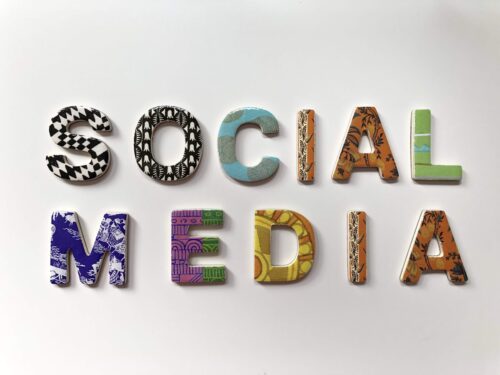081-4797-7173
In an era where climate change, pollution, and environmental degradation dominate global headlines, sustainability is no longer a trend, it’s a necessity. As more consumers align their purchasing decisions with their values, brands must evolve beyond simply offering quality products. They are now expected to operate responsibly and transparently.
But what does sustainability mean in the context of digital marketing?
While digital marketing may seem “cleaner” than traditional print media or billboard advertising, it still carries an environmental footprint. From the energy consumed by data centers to digital waste and carbon emissions from constant ad impressions, digital marketing isn’t exempt from ecological scrutiny.
This article explores the concept of sustainable digital marketing and provides practical, actionable tips for eco-conscious brands that want to align their marketing strategies with their sustainability mission.
What is Sustainable Digital Marketing?
Sustainable digital marketing refers to eco-friendly marketing practices that minimize environmental harm while promoting products or services. It’s about using digital platforms responsibly, cutting unnecessary emissions, reducing data overload, and prioritizing transparency, ethics, and long-term impact over short-term gains.

Why Does It Matter?
1. Consumer Expectations Are Shifting:
According to a 2023 IBM study, over 60% of consumers prefer to buy from eco-conscious brands. Gen Z and Millennials, in particular, expect businesses to be socially and environmentally responsible.
2. Digital Pollution is Real:
Sending one marketing email produces around 4 grams of CO₂. A campaign targeting millions of people can generate a substantial footprint. Streaming videos, storing data, and running cloud services also consume energy, mostly from fossil fuel-powered data centers.
3. Competitive Advantage:
Brands that adopt sustainable practices are often seen as more innovative, trustworthy, and forward-thinking, helping to build brand loyalty and attract purpose-driven customers.
1. Optimize Your Website for Sustainability
A slow, unoptimized website not only frustrates users, it consumes more energy.
How to reduce your website’s carbon footprint:
Use green hosting providers that are powered by renewable energy (e.g., GreenGeeks, A2 Hosting).
Compress images and use lazy loading to reduce page size.
Eliminate unnecessary scripts and plugins that bloat your site.
Use static site generators (like Hugo or Jekyll) for faster load speeds and lower emissions.
Bonus Tip: Use tools like Website Carbon Calculator to assess and improve your site’s carbon output.
2. Target Smarter, Not Harder
Digital ads that target millions of uninterested users waste resources. Refine your approach to reach only the most relevant audience.
Use behavioral data to target eco-conscious segments.
Run retargeting campaigns instead of broad, scattershot approaches.
Keep your campaigns concise and limit unnecessary impressions.
This doesn’t just help the environment, it saves money and improves ROI.
3. Reduce Email Frequency and Clean Your List
Email marketing is powerful, but sending thousands of emails daily, many of which are ignored, contributes to digital pollution.
Sustainable email tips:
Segment your list and send personalized emails.
Remove inactive subscribers regularly.
Opt for digest-style newsletters instead of daily updates.
Encourage users to choose their email frequency preferences.
Fewer, better emails can reduce emissions and increase engagement.
4. Use Eco-Friendly Tools and Vendors
Many marketing tools today are making strides toward sustainability. From renewable-powered SaaS platforms to green printers for offline campaigns, choose partners who share your environmental values.
Examples:
Use project management tools that minimize data redundancy.
Choose analytics software that allows for light tracking instead of heavy surveillance.
If you must print, use FSC certified paper and eco-friendly inks.
5. Champion Your Sustainability Efforts Authentically
Don’t just be sustainable, talk about it. Consumers want transparency and proof.
Show your eco-certifications, initiatives, and goals on your website.
Publish sustainability reports or impact statistics.
Share stories of how your business is reducing waste, supporting green causes, or offsetting carbon emissions.
Warning: Avoid greenwashing. Be honest and specific. Consumers are quick to detect exaggerated claims.
6. Create Evergreen, Value-Driven Content
Producing constant content can lead to digital clutter. Instead, focus on high quality, evergreen content that provides long term value.
Invest in SEO rich blog posts that stay relevant for years.
Repurpose content across platforms (e.g., blog into video or infographic).
Use content hubs instead of frequent one-off pieces.
The goal? Less content, more impact.
7. Leverage Local and Low Bandwidth Platforms
If your audience is local or regional (e.g., Nigerian SMEs), focus on local SEO, WhatsApp marketing, or community platforms rather than energy heavy global ad networks.
Ideas:
- Build Google My Business profiles.
- Use SMS campaigns or email newsletters that don’t require images.
- Share low-bandwidth videos optimized for mobile devices.
These methods not only save energy but also work better for audiences with slower internet connections.
8. Measure, Improve, and Offset
Like any other strategy, sustainable marketing is a journey.
Measure your carbon output from campaigns.
Work with carbon offset platforms to neutralize emissions.
Set internal sustainability KPIs for your marketing team.
Brands like Ecosia and Patagonia are proof that you can build scalable businesses while doing good for the planet.
Final Thoughts
Sustainable digital marketing isn’t about sacrificing performance, it’s about evolving with purpose. Eco conscious marketing not only helps the planet but also enhances your brand’s credibility, attracts like minded customers, and ensures long term business viability.
0






